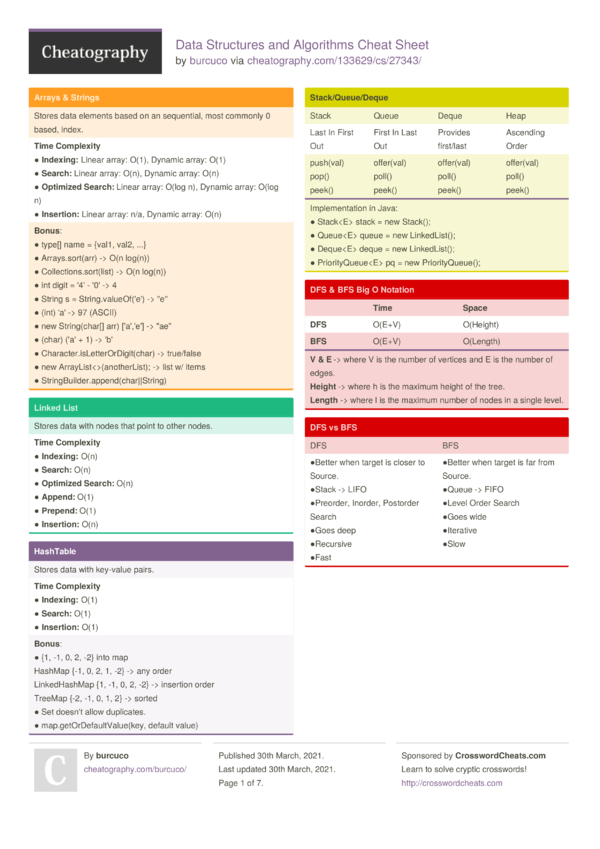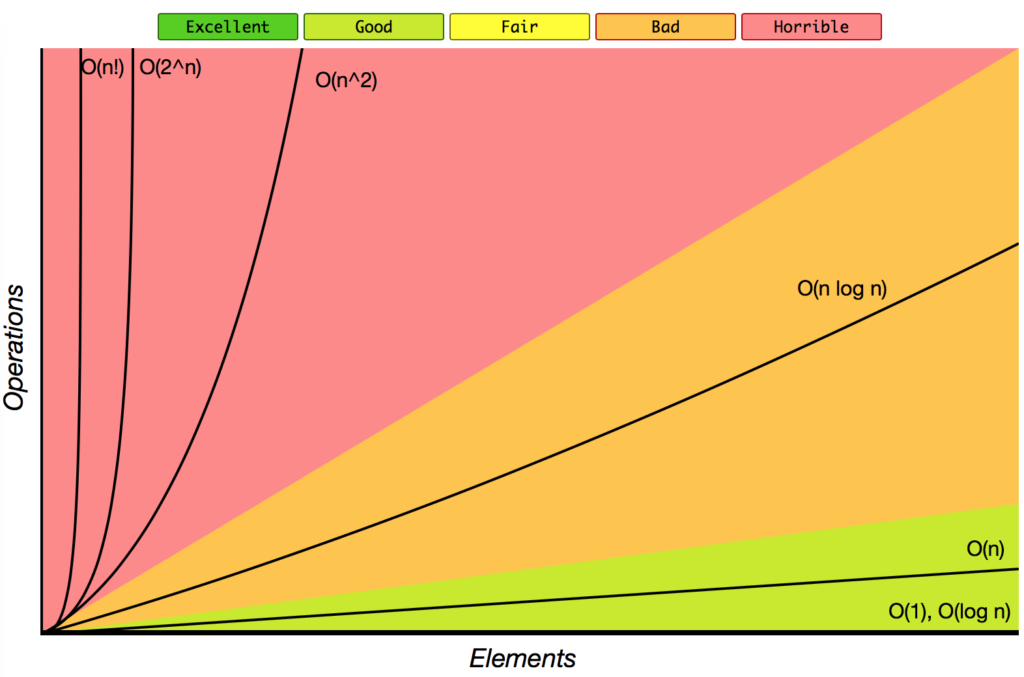- Java Tutorial
- Java Data Structures Cheat Sheet Pdf
- Algorithm Time Complexity Cheat Sheet
- Sorting Algorithms Cheat Sheet


- This page provides an overall cheat sheet of all the capabilities of RegExp syntax by aggregating the content of the articles in the RegExp guide. If you need more information on a specific topic, please follow the link on the corresponding heading to access the full article or head to the guide.
- An ArrayList is a built-in data structure that uses a dynamic array to store its elements. In order to use this data structure, you must import java.util.ArrayList at the top of your program. // Create an ArrayList that stores Strings: ArrayList months = new ArrayList.
- Java Data Structures Cheat Sheet. Table of contents. Know that it halves the data set by the average continuously until all the.
Java Data Structures Cheat Sheet, Algorithm Cheat Sheet, Java 8 Cheat Sheet, Java Syntax Cheat Sheet, Java Array Cheat Sheet, Computer Science Cheat Sheet, Binary Cheat Sheet, Programming Cheat Sheet, C Programming Cheat Sheet, Complexity Cheat Sheet, Java Collections Cheat Sheet, Java Reference Sheet, Big O Complexity Cheat Sheet, Sorting Algorithms Cheat Sheet, Data Structure Algorithm, Best. .Iteration structures (for-loops and while-loops) For readers who are familiar with these concepts, but not with how they are ex-pressed in Java, we provide a primer on the Java language in Chapter 1. Still, this book is primarily a data structures book, not a Java book; hence, it does not provide a comprehensive treatment of Java.
- Java Object Oriented
- Java Advanced
- Java Useful Resources
- Selected Reading
The data structures provided by the Java utility package are very powerful and perform a wide range of functions. These data structures consist of the following interface and classes −
- Enumeration
- BitSet
- Vector
- Stack
- Dictionary
- Hashtable
- Properties
All these classes are now legacy and Java-2 has introduced a new framework called Collections Framework, which is discussed in the next chapter. −
The Enumeration
The Enumeration interface isn't itself a data structure, but it is very important within the context of other data structures. The Enumeration interface defines a means to retrieve successive elements from a data structure.
For example, Enumeration defines a method called nextElement that is used to get the next element in a data structure that contains multiple elements.
To have more detail about this interface, check The Enumeration.
The BitSet
The BitSet class implements a group of bits or flags that can be set and cleared individually.
This class is very useful in cases where you need to keep up with a set of Boolean values; you just assign a bit to each value and set or clear it as appropriate.
For more details about this class, check The BitSet.
The Vector
The Vector class is similar to a traditional Java array, except that it can grow as necessary to accommodate new elements.
Like an array, elements of a Vector object can be accessed via an index into the vector.
The nice thing about using the Vector class is that you don't have to worry about setting it to a specific size upon creation; it shrinks and grows automatically when necessary.
For more details about this class, check The Vector.
Java Data Structures Cheat Sheet Pdf
The Stack
The Stack class implements a last-in-first-out (LIFO) stack of elements.
You can think of a stack literally as a vertical stack of objects; when you add a new element, it gets stacked on top of the others.
When you pull an element off the stack, it comes off the top. In other words, the last element you added to the stack is the first one to come back off.
For more details about this class, check The Stack.
The Dictionary
The Dictionary class is an abstract class that defines a data structure for mapping keys to values.
This is useful in cases where you want to be able to access data via a particular key rather than an integer index.
Since the Dictionary class is abstract, it provides only the framework for a key-mapped data structure rather than a specific implementation.
For more details about this class, check The Dictionary.
The Hashtable
The Hashtable class provides a means of organizing data based on some user-defined key structure.
For example, in an address list hash table you could store and sort data based on a key such as ZIP code rather than on a person's name.
The specific meaning of keys with regard to hash tables is totally dependent on the usage of the hash table and the data it contains.
For more detail about this class, check The Hashtable.
The Properties
Properties is a subclass of Hashtable. It is used to maintain lists of values in which the key is a String and the value is also a String.
The Properties class is used by many other Java classes. For example, it is the type of object returned by System.getProperties( ) when obtaining environmental values.
Algorithm Time Complexity Cheat Sheet

Sorting Algorithms Cheat Sheet
For more detail about this class, check The Properties.
